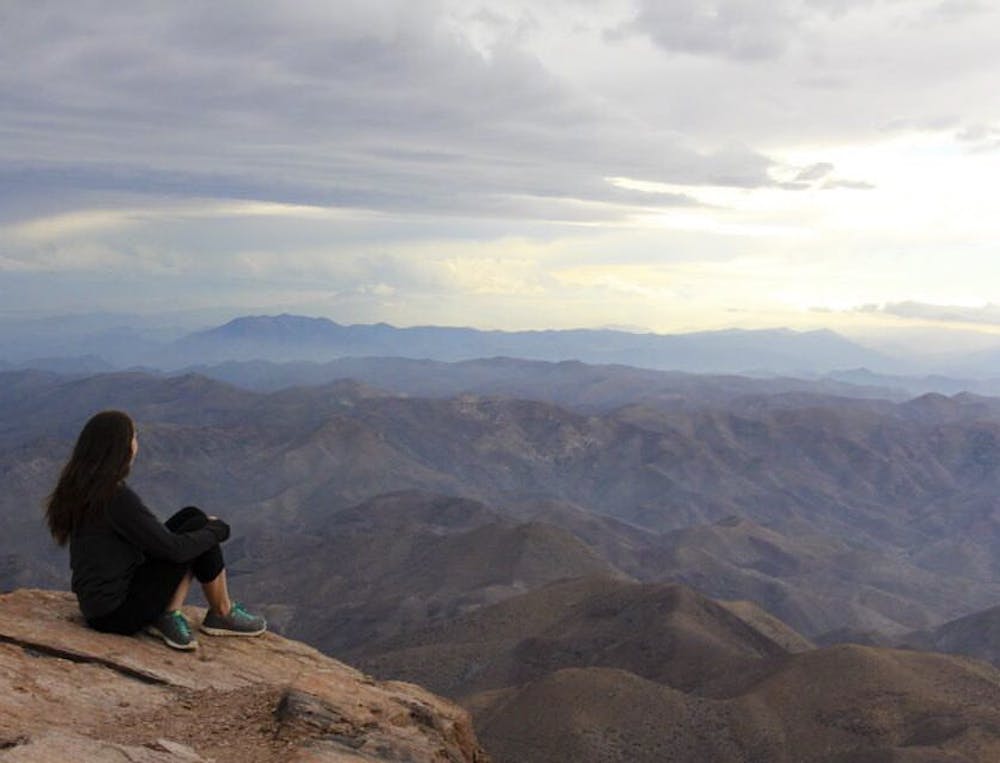When I told friends and family of my plans to jet off to Santiago at the end of the semester, I was asked one question more than any other:
“Why Chile?”
At first, I didn’t have a good answer. “Why not?” I’d reply. I’ve never been anywhere else. But on the first day of class, professor Shannon Martin gave me my answer when she called up a picture of the southern sky.
Throughout the semester, I got myself more and more excited to visit the Inter-American Cerro Tololo Observatory and the Mamalluca Observatory in the low coastal mountains of the Elqui Valley, just outside of La Serena, Chile.
I studied the observatories, studied the history of astronomy in Chile and, most importantly, studied the skies. I wrote my semester research paper on the country’s rich astronomical resources, which boasts more than 70 percent of the world’s astronomical infrastructure.
Now, when friends and family asked the fateful question, I’d whip out the picture and tell them,“I’m going to Chile to stargaze.”
The first rule of travel is to expect the unexpected. But by the time our bus departed the smoggy skies of Santiago, I had a semester’s worth of expectations built up in my head.
I expected to see the cleanest skies in the world, where more than 300 nights a year the skies are clear for observation, and where residents experienced eight years without rainfall. But when the plane landed, the skies over the Andes were darkening with clouds.
When we met our tour guide, Judith Plaza, just outside the airport, she greeted us with a caution.
“It could be anything,” she said, gesturing to the heavens. “We’ll just have to wait and see.”
In other words — expect the unexpected.
Plaza has lived in La Serena since 1998 when she emigrated from England to live in the birthplace of her husband. As the bus climbed the 2,200 meters up the semi-arid desert to the Tololo Observatory, she told us about the country of Chile, which stretches the same distance as from our west coast to our east coast, or from Madrid to Moscow. At the top is the Atacama Desert, the driest desert in the world, and at the tip, there are penguins.
“Imagine Chile as a very, very tall man who’s got a hot head and cold feet,” Plaza said. “We’re at waist height.”
As one of the most diverse countries in the world, visiting one of the 13 regions of Chile and generalizing it to the rest is akin to visiting Indiana and determining that it’s characteristic of the entire United States.
The difference was clear the moment we touched foot in La Serena. Ascending through the Elqui Valley, the stone, rock and sand spotted with eucalyptus and cacti were in stark contrast to the busy streets Santiago, often referred to as “Sanhattan” for its Manhattan-esque city scape.
La Serena, meanwhile, is known as “The Region of the Stars.” And there was a chance we wouldn’t see any.
It turned out not to matter.
By the time we reached the plateau upon which rested the Tololo Observatory and two 1.5-meter and 4-meter telescopes, my heart was content.
I peered across the Elqui Valley toward the snowcapped Andes in the distance, the light slowly fading behind the peaks. It was a transformative experience too big and too wondrous to capture in a single photograph. But I tried anyway.
Tololo, fittingly, means “at the edge of the abyss.”
I hadn’t seen the stars, but I was nonetheless convinced — I have never seen anything more beautiful in my life.
We would, eventually, see stars, but that’s another story for another blog.
Ciao!
vziege@umail.iu.edu






